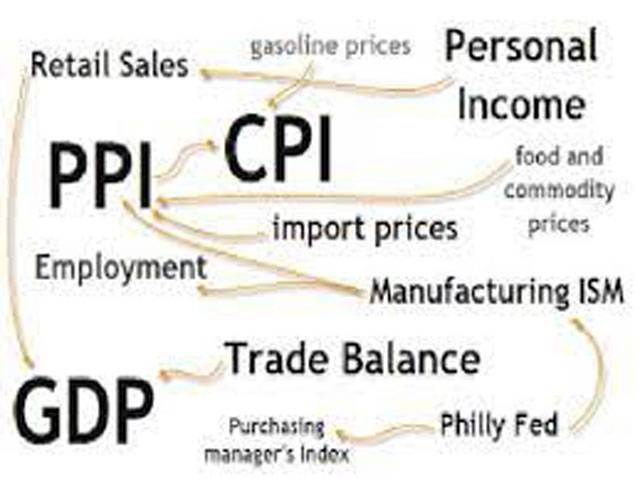ISLAMABAD-The major economic indicators are deteriorating as the latest data of the ministry of finance depicts bleak picture of the economy as the inflation is on the higher side, foreign exchange reserves have reduced, foreign direct investment has tumbled and currency has depreciated massively in the nine months (July to March) of the current fiscal year.
The major economic indicators have showed worst performance in July to March period of the ongoing financial year as against the same period of the previous year. However, current account deficit and budget deficit have improved, according to the latest data of the ministry of finance. Inflation has surged to 27.3 percent in July to March period of the year 2022-23, which was only 10.8 percent in the same period of the previous year. Similarly, the inflation was recorded at 35.4 percent in the month of March 2023 as compared to 10.8 percent in the same month of the last year. The ministry of finance has further warned that inflation would further elevate in the months to come and it is expected to remain in the range of 36-38 percent for the April.
The position of Pakistan’s foreign exchange reserves have also deteriorated in the current fiscal year. Foreign exchange reserves were recorded at $10.0 billion on April 26, 2023, with the SBP’s reserves now standing at $4.4 billion. Commercial banks’ reserves remained at $5.6 billion. The reserves were $16.57 billion in the same period of the last year with SBP’s reserves at $10.54 billion and commercial banks reserves are $6.03 billion. Meanwhile, the foreign direct investment (FDI) has decreased by 22.5 percent, as it declined to $1.04 billion in July to March of FY23 from $1.35 billion in the same period of the last year. The FDI received from China was $319.2 million (30.4 percent), Japan $157.3 million (15.0 percent), Switzerland $123.1 million (11.7 percent), and UAE $102.6 million (9.8 percent of total FDI). Total foreign investment during Jul-Mar FY2023 recorded an inflow of $30.7 million against an inflow of $ 1514.7 million last year. Foreign Private Portfolio Investment has registered a net outflow of $ 7.0 million during Jul-Mar FY2023. Foreign Public Portfolio Investment recorded a net outflow of $ 1010.7 million; on account of Sukuk repayment in December 2022.The total foreign portfolio investment recorded an outflow of $ 1017.7 million during Jul-Mar FY2023 as against inflow of $ 161.6 million last year.
The local currency has also deteriorated. The US dollar was recorded at Rs283.4 on April 26 this year. The data showed that Pakistan’s currency account deficit has improved. The current account posted a deficit of $ 3.4 billion for Jul-Mar FY2023 as against a deficit of S 13.0 billion last year, mainly due to contraction in imports. However, the current account posted a surplus of $ 654 million in March 2023 as against deficit of S$ 981 million in same period last year, largely reflecting an improvement in trade balance. In Jul-Mar FY2023, workers’ remittances were recorded at $20.5 billion ($23.0 billion last year), decreased by 10.8 %. MoM remittances increased by 27.4% in March 2023 ($2.5 billion) as compared to February 2023 ($ 1.98 billion) mainly due to Ramazan, Eid-ul-Fitr, and exchange rate adjustment.
According to the official data, with the sharp rise in revenues relative to expenditure, the fiscal deficit has been reduced to 2.8 percent of GOP during July-Feb FY2023 from 3.4 percent of GDP recorded in the same period of last year. Similarly, the primary balance posted a surplus of Rs.781 billion (0.9 percent of GDP) during Jul-Feb FY2023 against a deficit of Rs.399 billion (-0.6 percent of GDP) last year owing to a decline in non-mark-up expenditures. Meanwhile, the tax collection remained below the target during Jul-Mar FY2023 due to import compression, and a slowdown in domestic and global economic activities, however, overall tax performance demonstrates the government’s strenuous efforts to meet the full-year tax collection target.
Tuesday, May 21, 2024
Major economic indicators deteriorating

PM Shehbaz to visit UAE on May 23
12:45 PM | May 21, 2024
Indictment of PTI leader deferred
May 21, 2024
Gwadar women garment factory goes full steam ahead
May 21, 2024
Match the Heat
May 21, 2024
Stability First
May 21, 2024
Iran’s Grief
May 21, 2024
Safety Ensured
May 20, 2024
Seizing Solar Power
May 20, 2024
IMF Loan Effect
May 21, 2024
Climate Change
May 21, 2024
Elevate Government Schools
May 21, 2024
Construction of the Red Line BRTS
May 21, 2024
Contumacious Political Cult
May 20, 2024
ePaper - Nawaiwaqt
Advertisement
Nawaiwaqt Group | Copyright © 2024





